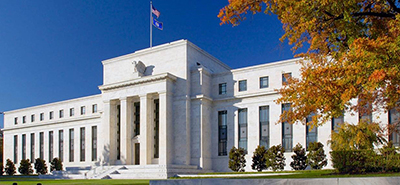
Fed Slows Pace of Rate Hikes, But Hints at More

In its final policy meeting of an eventful year, the Federal Open Market Committee on Wednesday raised the federal funds rate for the seventh straight meeting, but by 50 basis points instead of 75 basis points, as it had for the past four times.
Nonetheless, the federal funds rate now stands at 4.25-4.50 percent, its highest rate since 2008. And despite signs that inflation is easing, the Fed hinted it’s not done.
“The Committee anticipates that ongoing increases in the target range will be appropriate in order to attain a stance of monetary policy that is sufficiently restrictive to return inflation to 2 percent over time,” the FOMC said in its policy statement.
“As expected, the FOMC raised the federal funds target by 50 basis points at its December meeting,” said Mike Fratantoni, Chief Economist with the Mortgage Bankers Association. “Perhaps more importantly for the mortgage market, they also signaled that they anticipate slower growth, higher unemployment and higher inflation in 2023 than they had indicated at the September meeting.”
Fratantoni said should recent trends continue with respect to consistent declines in inflation amidst an increasing risk of recession, “we may be near the peak rate for this cycle, now expected to be just over 5%. MBA is forecasting a recession for the first half of 2023, as the full impact of these rate hikes is absorbed throughout the economy.”
Fratantoni added the housing market “has certainly welcomed the recent decline in mortgage rates. This decline is reflecting market expectations of being near the peak for short-term rates, as well as increased signs that the US is headed for a recession next year. Weaker growth typically leads to lower long-term interest rates, including mortgage rates.”
The MBA forecast sees mortgage rates for 30-year fixed-rate loans, which were at 6.4% last week, are expected to drift down and end 2023 around 5.2%. “Housing and mortgage markets benefit from both a strong economy, which supports growing household incomes, and also lower inflation, which translates to lower mortgage rates,” Fratantoni said.
“Despite some recent improvement on the inflation front, the FOMC seems to view price pressures as becoming increasingly entrenched,” said Sarah House, Senior Economist with Wells Fargo Economics, Charlotte, N.C. “Despite some recent improvement on the inflation front, the FOMC seems to view price pressures as becoming increasingly entrenched.”
The FOMC statement appears below:
“Recent indicators point to modest growth in spending and production. Job gains have been robust in recent months, and the unemployment rate has remained low. Inflation remains elevated, reflecting supply and demand imbalances related to the pandemic, higher food and energy prices, and broader price pressures.
“Russia’s war against Ukraine is causing tremendous human and economic hardship. The war and related events are contributing to upward pressure on inflation and are weighing on global economic activity. The Committee is highly attentive to inflation risks.
“The Committee seeks to achieve maximum employment and inflation at the rate of 2 percent over the longer run. In support of these goals, the Committee decided to raise the target range for the federal funds rate to 4-1/4 to 4-1/2 percent. The Committee anticipates that ongoing increases in the target range will be appropriate in order to attain a stance of monetary policy that is sufficiently restrictive to return inflation to 2 percent over time. In determining the pace of future increases in the target range, the Committee will take into account the cumulative tightening of monetary policy, the lags with which monetary policy affects economic activity and inflation, and economic and financial developments. In addition, the Committee will continue reducing its holdings of Treasury securities and agency debt and agency mortgage-backed securities, as described in the Plans for Reducing the Size of the Federal Reserve’s Balance Sheet that were issued in May. The Committee is strongly committed to returning inflation to its 2 percent objective.
“In assessing the appropriate stance of monetary policy, the Committee will continue to monitor the implications of incoming information for the economic outlook. The Committee would be prepared to adjust the stance of monetary policy as appropriate if risks emerge that could impede the attainment of the Committee’s goals. The Committee’s assessments will take into account a wide range of information, including readings on public health, labor market conditions, inflation pressures and inflation expectations, and financial and international developments.
“Voting for the monetary policy action were Jerome H. Powell, Chair; John C. Williams, Vice Chair; Michael S. Barr; Michelle W. Bowman; Lael Brainard; James Bullard; Susan M. Collins; Lisa D. Cook; Esther L. George; Philip N. Jefferson; Loretta J. Mester; and Christopher J. Waller.”
